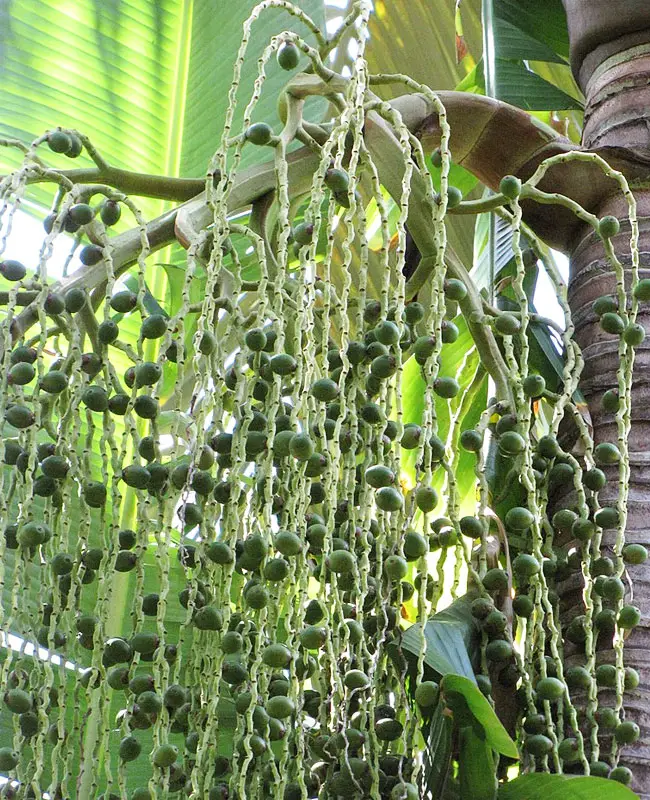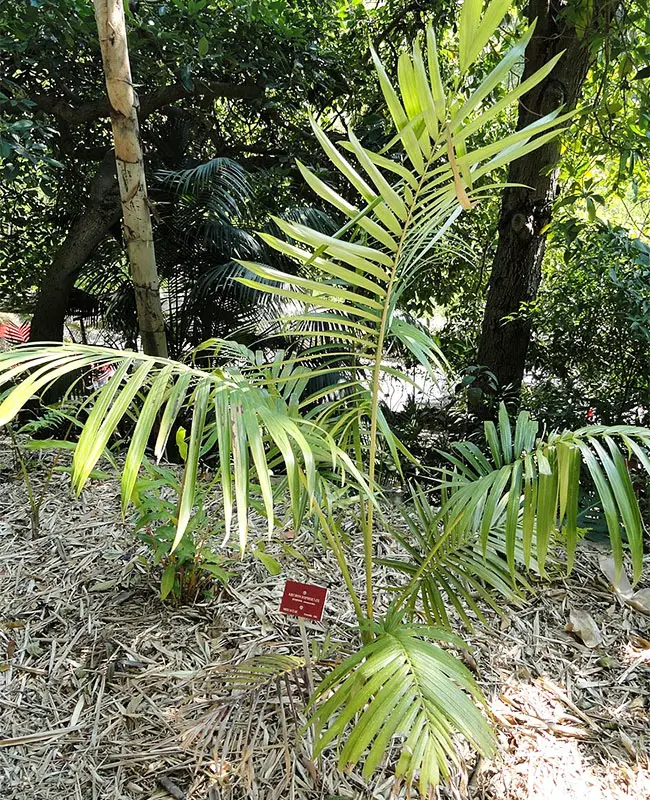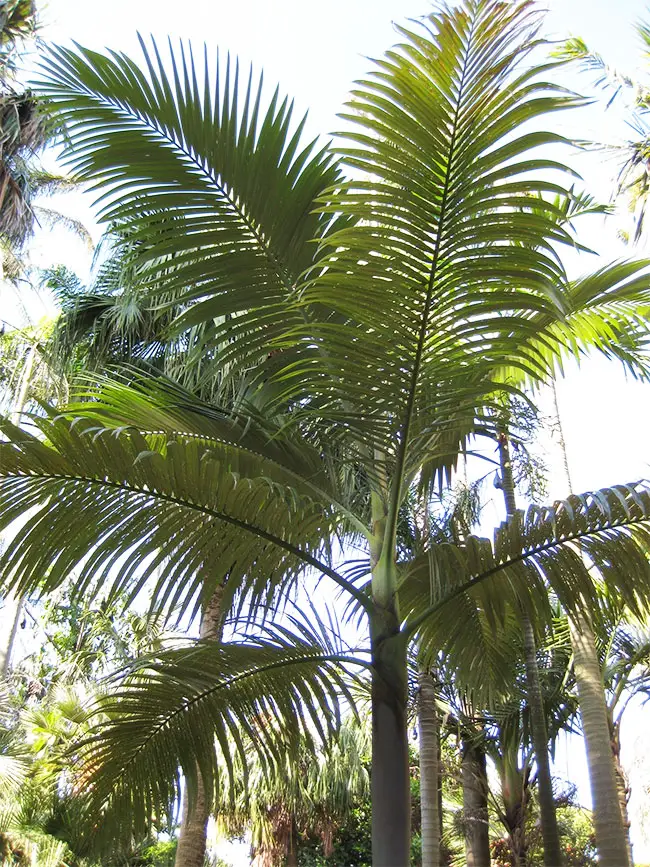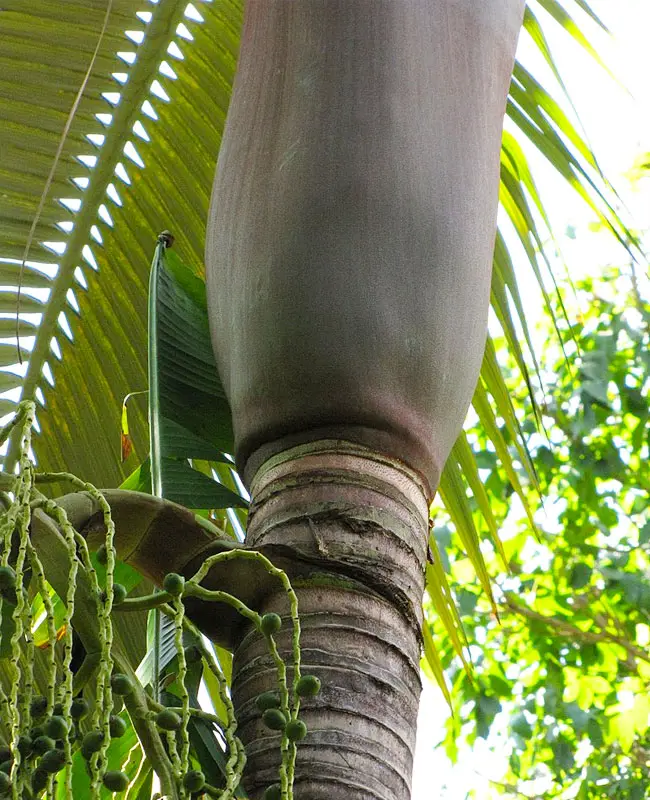
The Purple King Palm Tree, scientifically named Archontophoenix purpurea, is a close relative of the King Palm. This palm stands out as an exotic and rare species, renowned for its striking reddish-purple crownshaft.
It is native to the rainforests of northeastern Australia. It originates from regions in Queensland, Australia, and is naturally found in these rainforest environments.
The Purple King Palm Tree can even thrive when grown indoors, making it a straightforward and visually captivating addition to your collection.
Quick Facts:
| Scientific name: | Archontophoenix purpurea |
| Common names: | Purple King Palm, Mount Lewis King, Purple Piccabean Palm, Purple Palm. |
| Origin: | Native to Australia. |
| Growth Rate: | Slow. Up to 10-20 ft tall and 1-5 ft wide. |
| Cold Tolerance: | USDA Zones 9b (25 to 30 F) to 11 (above 40 F). |
| Light Req: | Partial shade to Full sun. |
| Water Req: | Moderate. |
| Soil Req: | Widely adaptable. |
| Fruit: | Yes. Red. Not edible. |
| Propagation: | By seed, germinating 2 – 3 months. |
Purple King Palm Identifying Characteristics
Its single, smooth gray trunk, slightly swollen at the base and approximately 1 foot in diameter, is prominently marked with the scars left by shed fronds.
It takes several years for this palm to develop the distinctive reddish-purple crownshaft that creates a striking contrast against its dark green leaves.
Atop the crownshaft, you’ll find stiff pinnate fronds, resembling feathers, ranging from dark green at the top to a shiny silver on the underside.
These fronds measure approximately 7-12 feet in length, with 50-60 flat leaflets each spanning 13-14 inches.
Purple King Palm Flowers and Fruits
The Purple King Palm produces clusters of white-creamy flowers, supported by 2-foot long inflorescences that emerge from where the crownshaft meets the trunk.
These flowers are followed by berry-like fruits that turn red when they ripen. These fruits are around 1/5 inch long and contain a single seed.
How To Care For Purple King Palm
In terms of cold tolerance, the Purple King Palm can withstand temperatures as low as 25°F for a brief period, provided it has reached maturity. It thrives in USDA Zones 9b (25 to 30°F) to 11 (above 40°F). This palm prefers partial shade or full sun exposure and thrives in moist yet well-drained soil.
The Purple King Palm demands minimal maintenance, as it features a self-cleaning trunk. To prevent nutritional deficiencies, it’s advisable to use a high-quality palm fertilizer with a continuous-release formula, applied twice a year during the growing season.
Propagation is typically achieved through seeds. Seed germination is a straightforward and speedy process, occurring within 6 weeks to 3 months. It’s best to sow the seeds fresh in the spring for optimal results.
Purple King Palm Pictures





I’m looking for a palm that has a large base that’s tourney kind of like a pinapple. Its thorns are golden and has a lot of foliage on top.